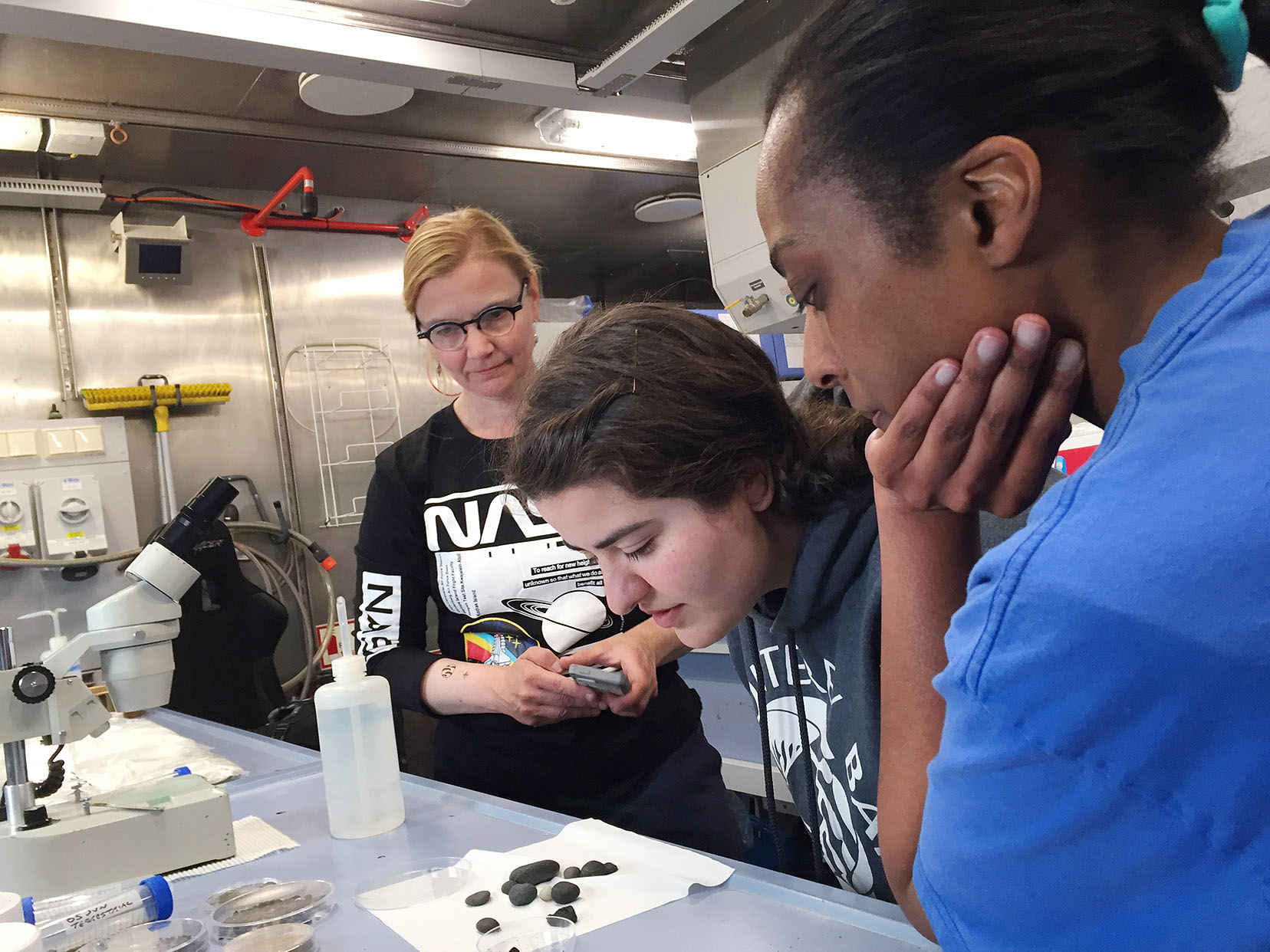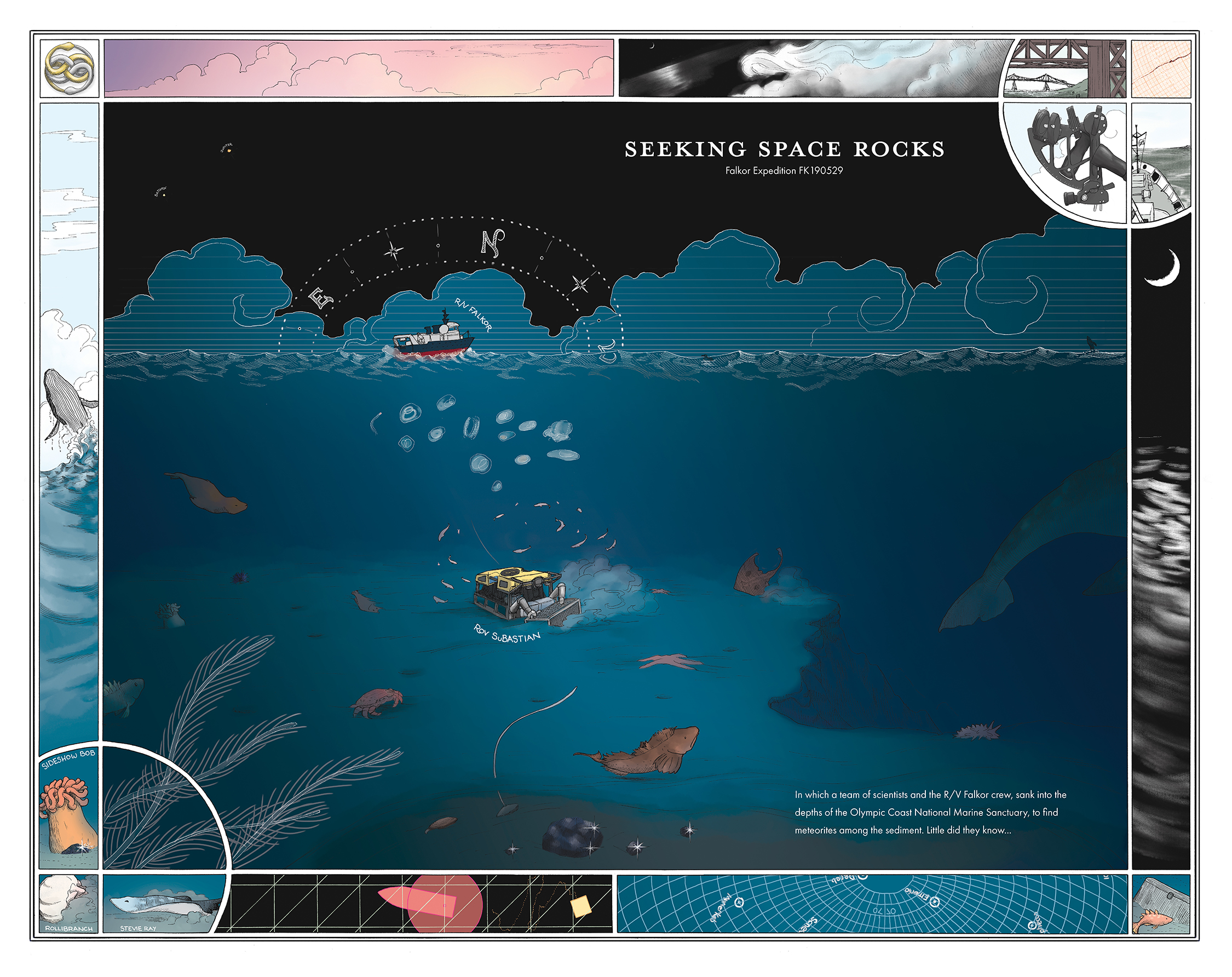When I first set off on the journey to seek space rocks, my focus was simple: I had a viable plan to collect details of our trip, plot them out with points of interest and wrap it all together with a theme. But the interesting thing about research and testing – whether in the sciences or the arts – is that it will utterly reshape your entire world for the better, if you let it.
You enter an experiment with a hypothesis and a method, but where you end and venture to inbetween is another story. In our expedition, we knew where probability and modeling told the science team the meteorites should be, and they knew what method of retrieval they intended to use. The tests happened, new retrieval instruments were made overnight, and the results harvested some new material to foster more experimentation. Perhaps not the intended result set forth by the initial theory, but exploration is like that: you end up in places you may not have even dreamed.

How My Research Changed Me
Speaking of dreams, I certainly did not realize that my fun, illustrated maps would ever land me aboard a research vessel, and I am still elated to have been given the opportunity. My research took the form of collecting information, experiences, and stories; meeting people and understanding what role they play in the functioning of the vessel. After reading over all of my notes, and thinking about the trip as a whole, I realized that I was missing the true narrative: the individuals and their experiences. I decided to depict a series of stories that made up our journey, rather than the route itself.

The Importance of Art
Most artists, especially those who champion the lighter side of storytelling, tend to be at odds with what their work can really bring to the world. If you are not highlighting deep, emotional, controversial topics, how are you really helping? Of course, making people happy is supremely important, but even in realizing that, there is often the question of “Are we?” Are we actually bringing joy to people with our stories and artwork?
I have to say that I actually saw joy in action while showing around the linework for this map. When people recognized moments in my piece of art that they lived through (and usually laughed through), I could see the spark ignite as the memory dawned, and they world laugh anew. That is the power of joyful storytelling.
This is also why communicating science in an enjoyable, memorable way is so important. When we can attach a positive value to a piece of information, it makes it more substantial in our minds, and we retain the information for a longer period of time. It means more to us than something to memorize from a flashcard. This is a lesson I will carry with me as I return to my shore life and move forward, using storytelling to unite people far and wide.
As an aside, I am also incredibly proud of myself for remembering almost 40 names in under two weeks!
Many thanks to the Schmidt Ocean Institute, the Falkor team, NASA, the Olympic Coast National Marine Sanctuary and the various on shore institutions that came together to make this trip possible. I am eternally grateful.


